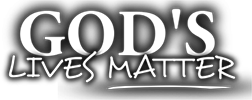Labor and Capital,
People and Things;
we each should own labor 1
and capital 2 things.
Things that make profits 3
and dividends 4 bear
for us and our families;
as owners we’d share.
When apps and robotics
start taking our jobs,
with dividends coming,
there’s no need for sobs.
How can we buy assets 5
if money we lack?
With capital credit 6 —
insured loans 7 we’d pay back.
When banks create money
for citizens all,
we’ll buy our new shares
from the firms great and small. 8
With all our investments
those firms could acquire
equipment and robots,
making profits grow higher.
With the companies’ profits,
our loans we’d repay. 9
As capital owners,
we’d greet the new day!
The firms making money
from goods that they sell,
would pay us our profits,
then we all could do well. 10
Labor and Capital,
People and Things.
Would you rather be owned,
or own capital things?
© 2012, rev. 2017-1205 Dawn Brohawn
EXPLANATORY NOTES
1 “Labor” refers to all forms of human input — including manual, intellectual, and entrepreneurial.
2 “Capital” refers to all non-human things used to produce marketable goods and services.
3 What the owners receive after the company’s goods or services are sold and all costs are subtracted from the sales revenues.
4 Profits that are divided among the shareholders, based on the number of shares they own.
5 In other words — capital — productive things owned by a company, which in turn is owned by its shareholders.
6 Credit (in the form of a loan) that is used to buy a productive asset that pays for itself with the full stream of its own future profits.
7 This refers to “capital credit insurance” used to cover the risk that a particular loan won’t be repaid. Such insurance provides an alternative to traditional forms of “collateral” (assets a lender can seize if a loan isn’t paid back). It overcomes a major obstacle to capital ownership facing the vast number of non-owning citizens, who otherwise could not afford to purchase capital.
8 The proposed strategy would enable every citizen, no matter how poor or rich, to acquire an equal allotment of interest-free capital credit (capital loans) to buy full dividend payout, voting shares. Equal access to capital credit is for economic democracy what the ballot is for political democracy.
These “just free market” reforms would create asset-backed money when local banks take approved expanded capital ownership loans to the discount window of their regional Federal Reserve to be “monetized.” The newly created money would be used by citizens to buy new and transferred shares in profitable companies. In turn, the companies would use the new asset-backed money to purchase needed plant, equipment, land, robots, etc. that contribute to the production of marketable goods and services.
9 This refers to “self-liquidating” (self-repaying) capital credit, where a loan is repaid with the full stream of future, pre-tax corporate profits. (Such future profits are also called “future savings.”) No interest would be charged on these expanded ownership loans, because nobody’s “past savings” are lent out. There would only be a one-time service fee “discounted” (subtracted by the banks from the total loan amount) to cover administrative expenses, profit, and loan risk insurance. While the loan is being repaid, that citizen’s share of profits would be used for that purpose. After the loan is repaid, those profits would provide an independent stream of income to the citizen.
10 This is how every person can share in, and become economically empowered through, ownership of future capital growth and transfers. The equal right of each person to acquire the full rights of ownership, enshrined in Article 17 of the United Nation’s Universal Declaration of Human Rights, could finally be realized. The reformed economic system would allow every child, woman and man to become financially independent, and to prosper and develop to his or her fullest human potential in the Age of the Robots, Artificial Intelligence and Self-Driving Vehicles.
